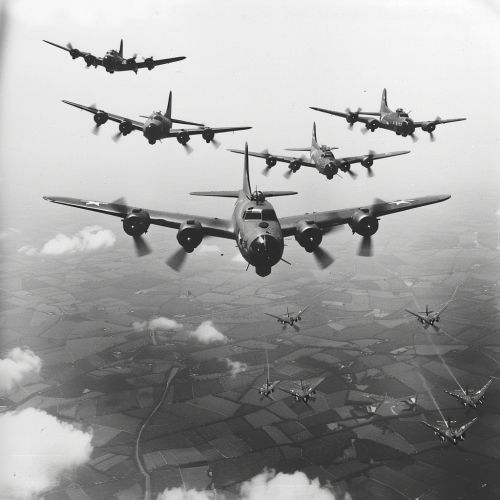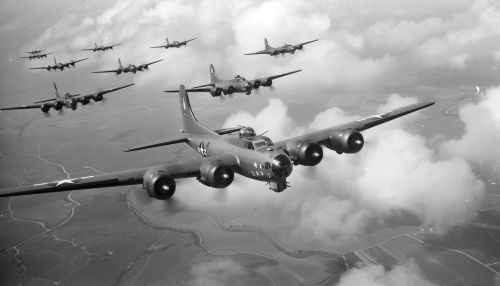United States Army Air Forces
United States Army Air Forces
The United States Army Air Forces (USAAF) was the aerial warfare service component of the United States Army during and immediately after World War II. It was created on June 20, 1941, replacing the United States Army Air Corps (USAAC) and was the direct predecessor of the United States Air Force (USAF), which was established as a separate branch of the U.S. military on September 18, 1947.


Formation and Structure
The USAAF was formed as part of a broader reorganization of the United States military in response to the growing threat of global conflict. The establishment of the USAAF marked a significant shift in the structure and strategy of the U.S. military, emphasizing the importance of air power in modern warfare. The USAAF was headed by General Henry H. Arnold, who served as its commanding general throughout its existence.
The organizational structure of the USAAF included several major commands, each responsible for different aspects of air operations. These included the Air Transport Command, which managed the logistics of air transport; the Air Technical Service Command, responsible for maintenance and supply; and the Air Training Command, which oversaw the training of new pilots and aircrew.
Major Commands and Operations
The USAAF played a crucial role in various theaters of World War II, including the European, Pacific, and Mediterranean theaters. It conducted strategic bombing campaigns against Axis powers, provided air support for ground operations, and engaged in air-to-air combat with enemy aircraft.
Strategic Bombing
One of the most significant contributions of the USAAF was its strategic bombing campaigns. The Eighth Air Force, based in England, carried out extensive bombing raids over Germany, targeting industrial and military infrastructure. These missions aimed to cripple the enemy's war production capabilities and weaken their ability to sustain prolonged conflict. The bombing of cities such as Dresden and Hamburg remains a subject of historical debate due to the high civilian casualties.
Tactical Air Support
In addition to strategic bombing, the USAAF provided vital tactical air support to ground forces. This included close air support missions, where aircraft attacked enemy positions in direct coordination with ground troops. The Ninth Air Force, for example, played a key role in the Normandy invasion (D-Day) by providing air cover and attacking German defenses.
Technological Advancements
The USAAF was at the forefront of several technological advancements during World War II. The development and deployment of long-range bombers such as the Boeing B-17 Flying Fortress and the Consolidated B-24 Liberator allowed for sustained bombing campaigns deep into enemy territory. The introduction of the North American P-51 Mustang, a long-range fighter, provided essential escort for bombers, significantly reducing their losses to enemy fighters.
The USAAF also pioneered the use of radar and other electronic warfare technologies. Radar was used for navigation, targeting, and early warning, giving the USAAF a significant advantage in both offensive and defensive operations.
Training and Personnel
The training of pilots and aircrew was a critical component of the USAAF's success. The Air Training Command established numerous training bases across the United States, where recruits underwent rigorous training programs. These programs included primary flight training, advanced flight training, and specialized training for different types of aircraft and missions.
The USAAF also implemented a comprehensive system for selecting and training officers and enlisted personnel. This system ensured that the USAAF had a steady supply of well-trained and capable individuals to operate and maintain its aircraft.
Post-War Transition
After the end of World War II, the USAAF underwent a period of demobilization and reorganization. The lessons learned during the war highlighted the importance of an independent air force, leading to the establishment of the United States Air Force as a separate branch of the military in 1947. The transition from the USAAF to the USAF involved significant changes in structure, doctrine, and strategy, reflecting the evolving nature of air power in the post-war era.
Legacy
The legacy of the USAAF is evident in the continued emphasis on air power within the U.S. military. The strategic and tactical doctrines developed during World War II laid the foundation for modern air operations. The technological innovations and advancements in aircraft design and electronic warfare have had a lasting impact on the development of military aviation.
The USAAF also played a significant role in shaping the post-war geopolitical landscape. The strategic bombing campaigns and the use of air power as a tool of military strategy influenced the conduct of subsequent conflicts, including the Korean War and the Vietnam War.
